Surfing’s Rapid Transformation: Guide to rapid wave pool and river wave evolution in Europe
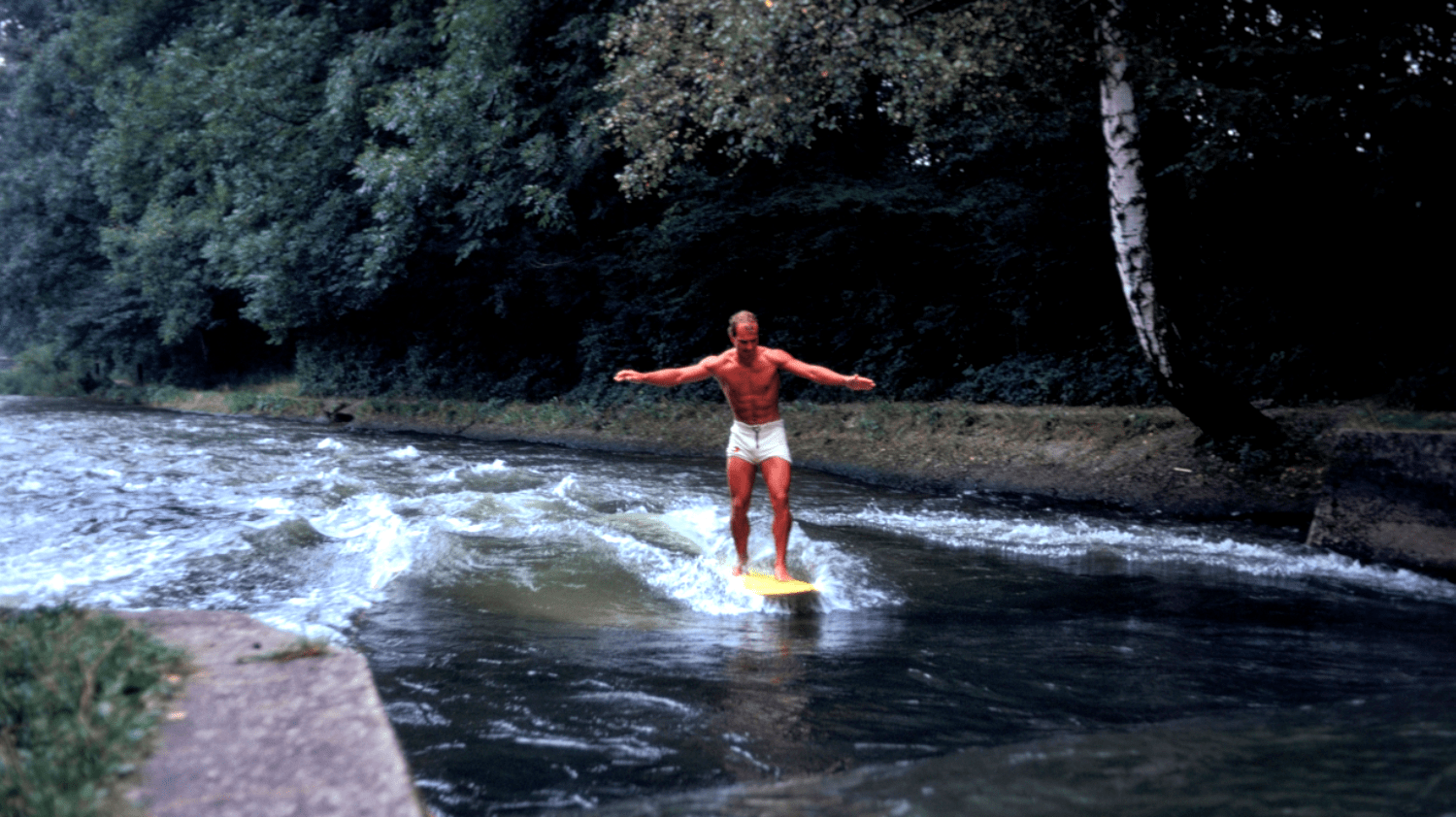
What the North Shore is to surfing, Bavaria is to rapid wave surfing. To understand the state of rapid, river and stationary wave surfing (three terms that loosely describe the same thing) we need to understand the sport’s roots. Wave pool surfing is easy. Developers do their best to transport the ocean-experience into a tank with human-made waves. For wave pools modelled after river rapids, the line between natural and not-natural gets blurred. Some setups are “enhanced” with submerged objects and diverted waterflows. Currently, there are 10 top-tier naturally occurring rapid waves in Europe. However, there are 15 human-made rapid wave pools in roughly the same space. This means there are more human-made surf spots than naturally occurring ones. That’s kind of a big deal.
WavePoolMag contributor Quirin Rohleder delivers a full-on “Rapid Wave Pool Primer.” Here he chronicles the development of a sport that works equally well in central Munich as it does in the tranquil environs of a Milan, wakepark and beyond.
Main Image: According to the photographer this is the first photo of a surfer riding a rapid in Munich. The spot is a little upstream from Floßlände, where the sport really started to gain popularity and momentum. It was taken in August 1971. The surfer is Michael Nath. Photo: Arthur Pauli
RAPID SURFING – a brief history and status quo
After a recent estimate by Munich’s IGSM surf club, there are roughly 3.500 active surfers in Bavaria’s capital alone. Maybe not all of them call themselves Rapid Surfers or surf on one of the city’s waves, but it is hard to walk, drive or cycle through Munich’s city center without seeing people walking or on bikes with surfboards under their arms. Last summer I cycled around town and actively counted; it was incredible. Within 20 minutes I saw 20 surfers on their way to shred: young kids on their way to Floßlände, girls with longer boards on their way to the smaller Eisbach wave and obviously the regular crew making their way to the world’s most famous rapid, Munich’s Eisbach.
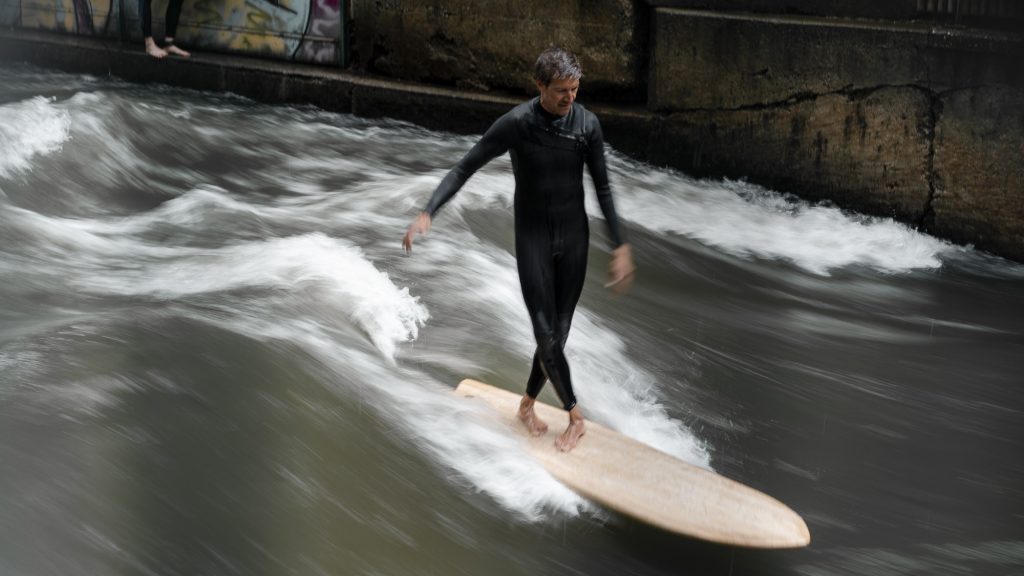
Munich is an exceptional location and extremely blessed when it comes to rapid surfing. If the stars align, you can easily surf six different public access waves in one day, spanning from open-river waves to modified river waves to canals and nowadays an artificial one as well if you have some change to spare.
Rapid Surfing has a long history and is ingrained in Munich’s culture, the first surfing was done in the early seventies by Arthur Pauli and friends. The first surf contest was organized in 1975. Since then, a unique surfing community and culture have developed. If you want to find out more about the history, check out the movie Keep Surfing, which gives you some great insights into the culture of river surfing in Munich. The film covers from the early days, including when surfers were chased by police because it was forbidden to surf the Eisbach, to the present where rapid surfing has become incredibly popular.
A lot of surfers in the D/A/CH region (Germany / Austria / Switzerland) looked at what was happening in Munich and started searching for waves around their home towns and by now there are countless open river waves, some known, some secret, that get surfed all over Europe and of course the US and Canada, two countries with a great rapid surfing scene as well. It’s here mostly in Munich where performance levels get raised pretty much every day at the Eisbach. This is the place kids stuck the first 360°s and airs back in the early nineties and were the creme de la creme of today are doing full rotation alley-oops and 360 big spins. Munich is where Citywave is from, the leading company for artificial rapids. They have brought the sport to maybe not every corner of the world, but there’s a healthy number of their waves out there. Munich is where the Rapid Surf League hails from, the first-ever professional surf league on rapids that took a look at the sport and said: “wait a minute, everything that defines ocean surfing is gone so let’s be creative, use what we have and find a different competitive format that makes things exciting” and born was RSL’s Cut: 2 Call format.
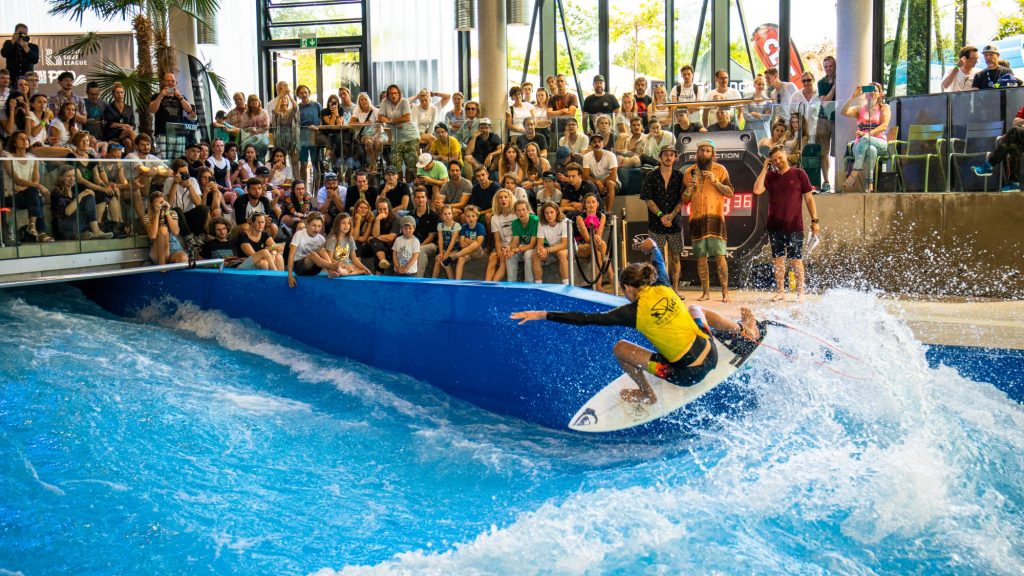
“I was blown away by this culture”, Rob Machado said in a Wavepool Mag interview after visiting the Eisbach in 2012. And this culture has grown into so much more. Because with a culture or counter-culture also comes creative business. It is inevitable if such a big number of creative minds love doing something so much. Munich is home to one of the biggest surf shops in Europe, which has a surf product selection most shops in France can be jealous of. There are eight surfboard manufacturers in Munich alone and I hope I’m not forgetting anyone. And while shaping might not be the main business for most, it’s a pretty healthy number. And there are more and more local brands producing wax, fins, clothing, surf accessories and there are at least five guys offering surfboard repair and they are always fully booked.
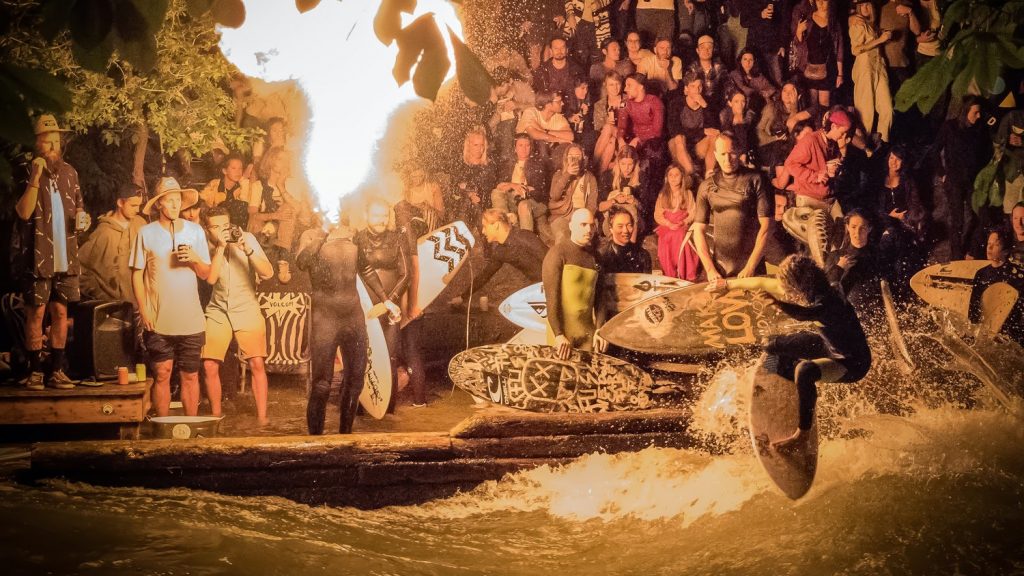
Another crazy development, if we leave Munich behind, but keep the Eisbach in mind as the perfect example, is the number of projects that are building or want to build waves into existing rivers and canals in Germany. Something extremely important to the sport as it will help grow a solid base through waves operated by surf clubs, which means access will be much easier because, let’s face it, commercially-run artificial rapids aren’t exactly cheap. And while some of those modified river waves might need to move some earth, once they are built, no more energy is consumed.
But of course, there’s space for everyone, artificial and modified river waves and ideally, there’s a modified wave not too far from a commercial operator. So let’s look at the status quo with a focus on Germany, Austria and Switzerland.
Rapids in Germany:
- Munich: as mentioned above, Munich has a bunch of open river waves that work during floodings. The most famous wave, the Eisbach, is actually natural but has been modified over the years to work all year round. Back in the day we sometimes had to wait for weeks on end for the wave to come back from just whitewater. The same goes for Floßlände. Back then it was a natural river wave, but now it has been modified with a ramp. Then there’s a smaller wave further down from the main Eisbach break. Last but not least, in 2017 the Jochen Schweizer Arena opened its doors with the first artificial rapid just outside Munich. It’s a 7.50-meter wide (25 feet) Citywave.
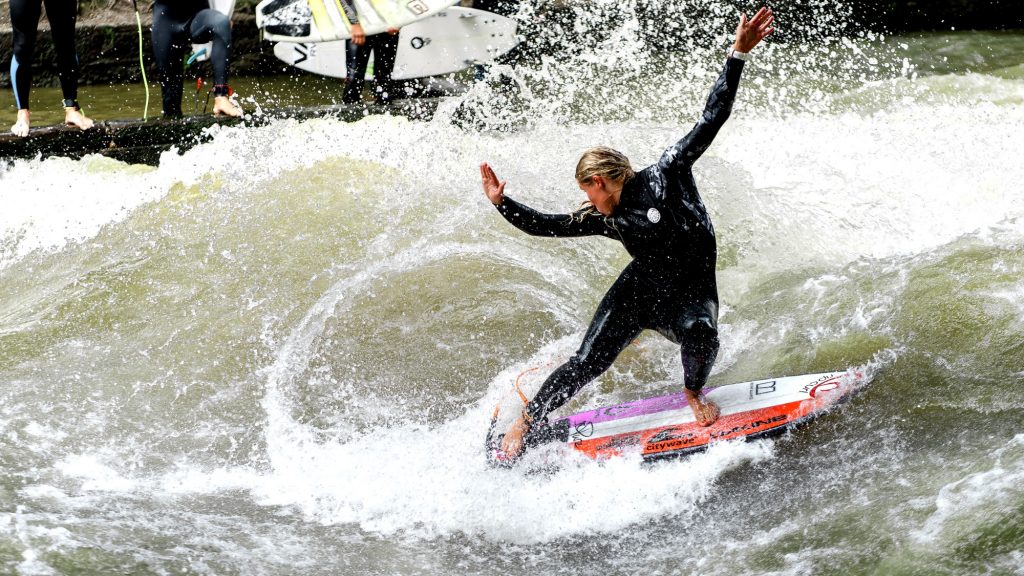
- Langenfeld, artificial: Surf Langenfeld is an artificial rapid and Unit Surf Pool’s first installment with a width of 7.50 meters (25 feet). Wasserski Langenfeld, nestled between Cologne and Dortmund, is one of Germany’s biggest and oldest cable parks and the integration of the Unit Surf Pool has been extremely popular and successful and should be a great example for other cable locations.
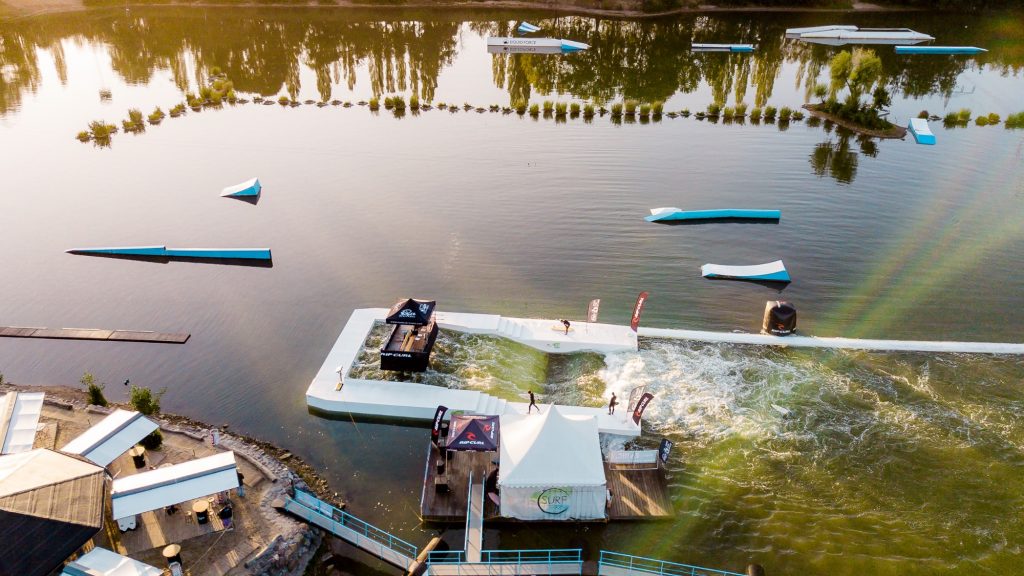
- Osnabrück, Hasewelle, artificial: this Citywave was built into a shopping center called L&T. The wave is maybe not as powerful as other Citywaves, but the experience of surfing in a mall with people watching you from 5 stories up is pretty special.
- Berlin, Wellenwerk, artificial: right now this Citywave in Germany’s capital is 8,50 meters, the widest indoor rapid there is in Germany. A live stream from the German Rapid Champs, which were organized by the German Surfing Federation (DWV) in September 2020 had 168.000 live online views on national TV. I guess it shows the popularity of this young sport.
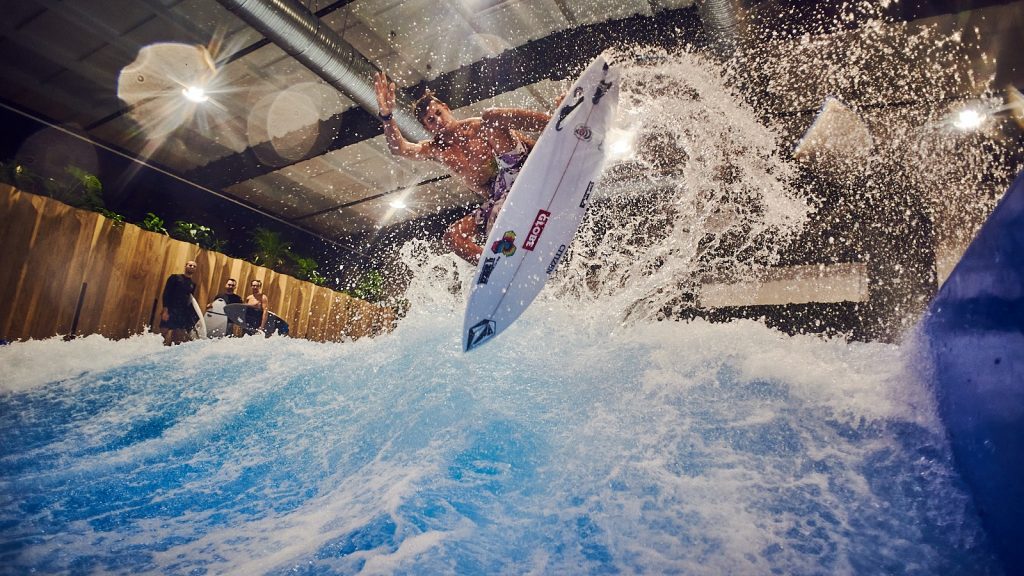
Projects to be finished in 2021:
- Nuremberg, Dauerwelle, modified river wave: modified river wave like The Riverwave in Austria. The Dauerwelle surf club has been fighting for the project since 2012. It is well advanced and should see the light of day in May 2021.
- Pforzheim, Black Forest Wave, modified river wave: rapid in a canal; construction is well underway, they too should be finished soon.
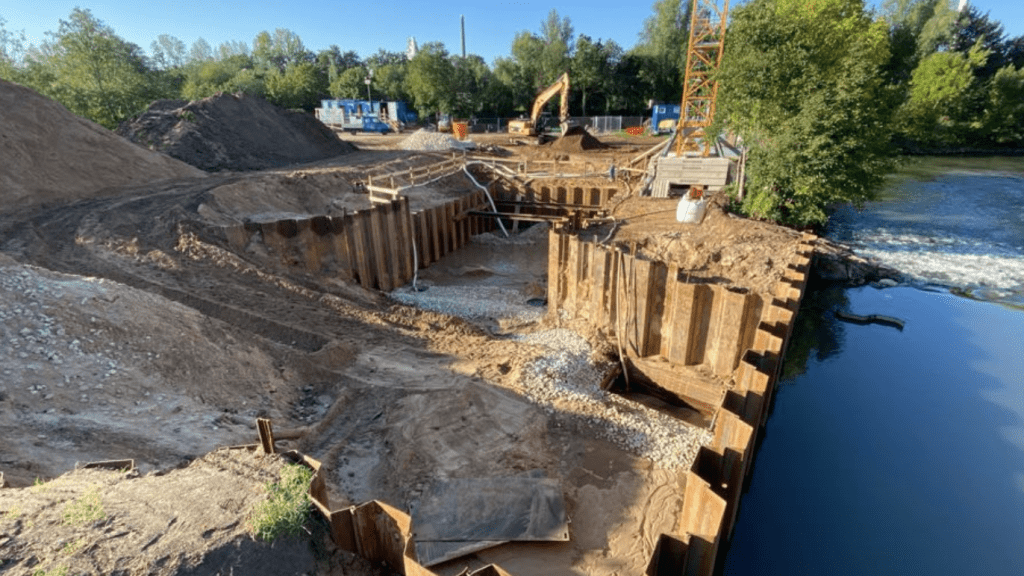
Projects which should break ground in 2021 to be finished in 2022. Most of these projects are modified river waves managed through surf clubs so have great access:
- Hanover, Leinewelle, modified river wave: after years and years of fighting, they recently won a court case against the local fishing club and are finally allowed to start building. There might be a bit of funding missing, but they will surely manage!
- Wolfratshausen, modified river wave: another project with decade-long ups and downs. Apparently, things look promising.
- Chiemgau Welle, modified river wave: another project in Bavaria and things are looking good.
- Potsdam, Havelwelle, artificial: indoor rapid just outside Berlin. Could be the biggest one to date if it gets the green light hopefully in March 2021.
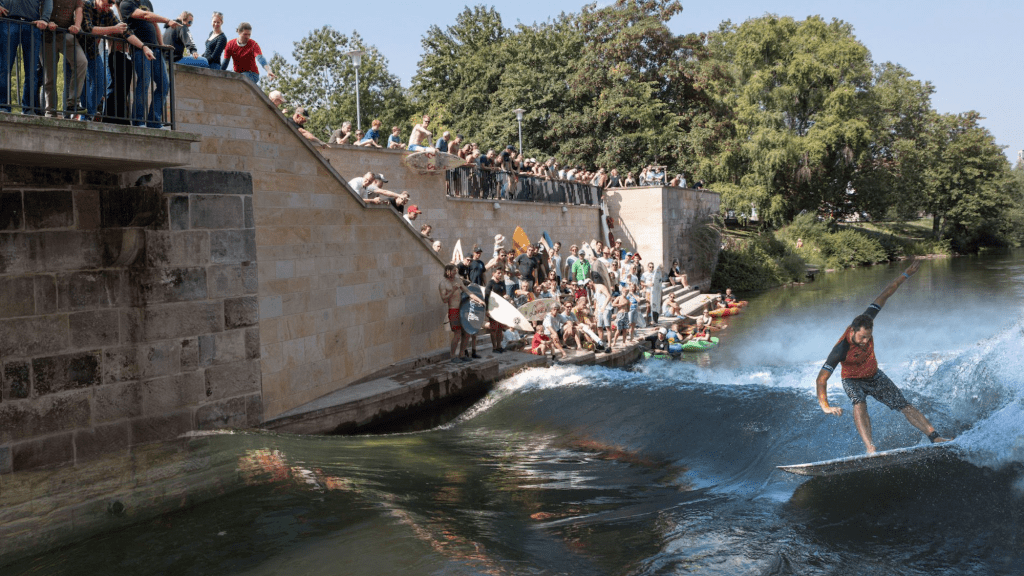
Then there are modified river wave projects in Augsburg, Regensburg, Kassel, Passau, Ulm, Stuttgart, Gießen and quite a few other towns. To get the permits to make adjustments to a natural river or canal is very difficult, but one can hope that once we have Nuremberg and Prorzheim operating, the first waves of such a kind in Germany, things could get easier for other projects in the future. Then there’s also a few artificial rapids in the planning, most notably Kiel and Hamburg and we are sure there’s a few we don’t know or can’t tell you about 😉
Austria:
Germany’s neighbor has a very core and active rapid surfing scene that goes back a good 25 years. There’s a lot of open river waves to be discovered if you’re up for it.
- Salzburg, Almkanal, modified river wave: It might not be the widest wave, but what some of the good locals like Lukas Haigermoser do on this wave is crazy.
- Ebensee, The Riverwave, modified river wave: the fist of its kind and it’s a good one. The Riverwave is a modified river wave with a very different operating mode: you pay per day and not per hour slot. It hopefully serves as an example of what can be done.
- Vienna, Shopping Centre Süd, artificial. Citywave AT is a temporary outdoor installment from May to October, which has been hosting the Austrian rapid champs.
- Couple of projects planned, modified river waves and artificial rapids in cities such as Vienna, Graz and Zell am See.
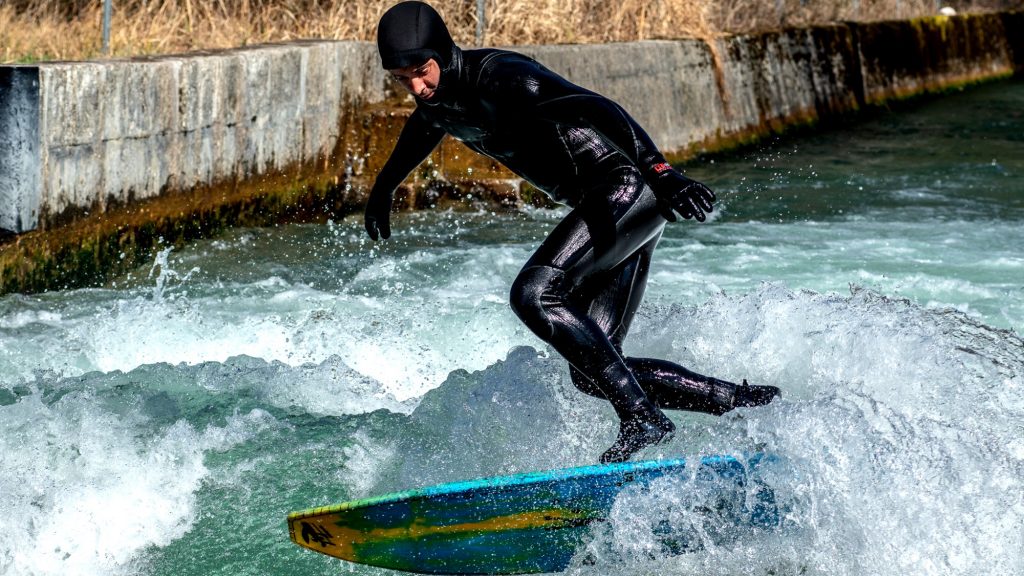
Switzerland:
The Swiss have been surfing rivers for quite some time as well and have a very healthy and core scene.
There are quite a few river waves, the most famous being Bremgarten near Zurich, which can be considered the birthplace of rapid surfing in Switzerland. Another fun and well-known natural rapid can be found in the city of Thun, a so-called lock wave as it is positioned right behind a flood gate.
- Urban Surf, Zurich, artificial: temporary outdoor Citywave installment from April to October, right in the city.
- Luzern, Oana, artificial: indoor Citywave in Switzerland’s biggest mall, the Mall of Switzerland.
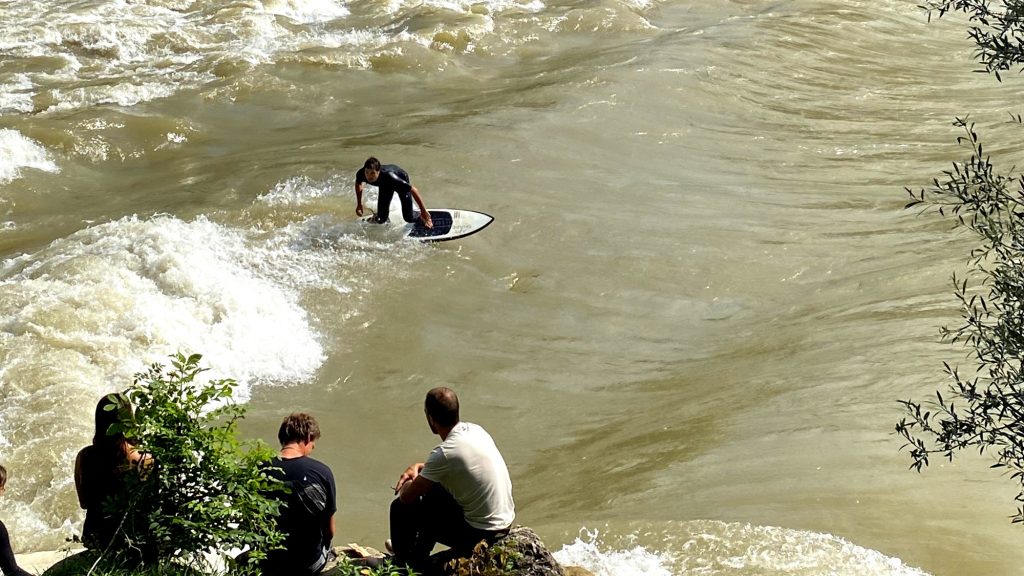
Slovakia:
- Cunovo, Divoka Voda, modified river wave: rapid which was integrated into a kayak park.
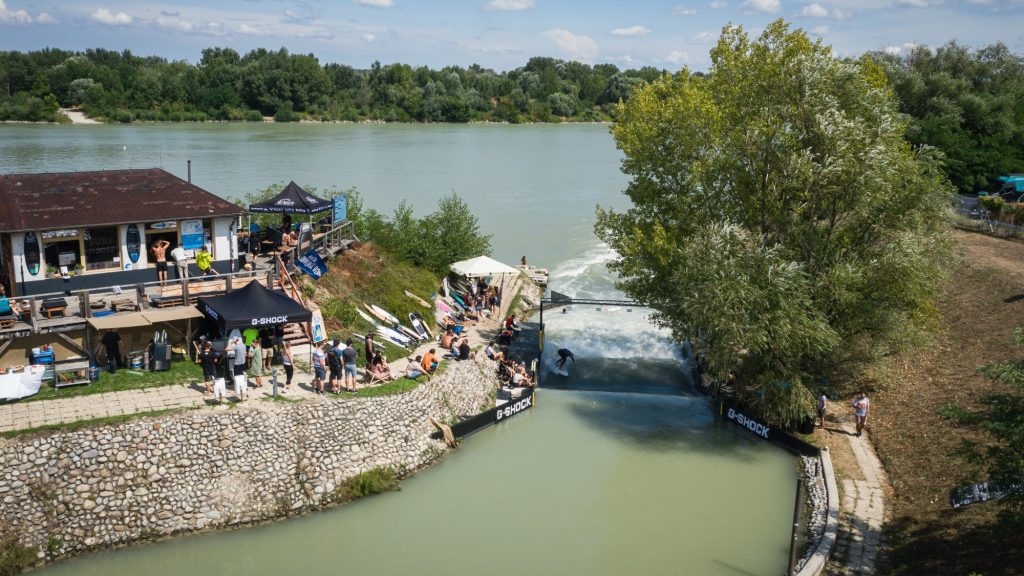
Italy:
- Milan, Wakeparadise Milano, artificial: biggest Unit Surf Pool right next to Linate airport in Milan.
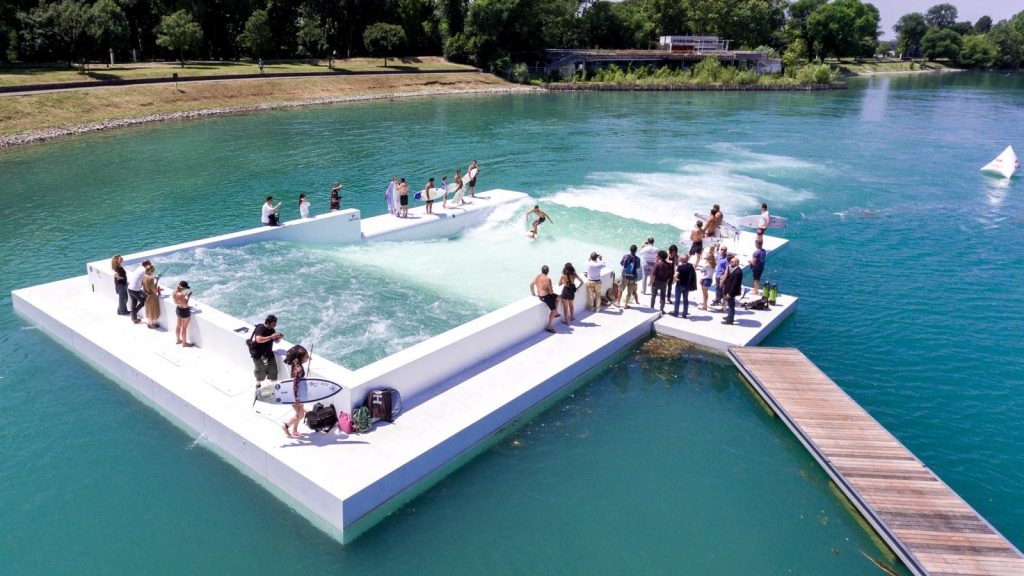
France:
- Annecy: modified river wave
- Lyon, City Surf Park, artificial: indoor rapid built by French company Hydrostadium
- St Gilles Croix de Vie, The Glassy House, artificial: indoor Citywave
- Provence, Wave Island, artificial: Citywave in an amusement water park
Spain:
- Madrid, Citywave Madrid, artificial: outdoor rapid just outside Spain’s capital
Most important rapids outside Central Europe:
- Moscow, Russia, Flow Moscow, artificial: indoor Citywave
- Lebedyan, Russia, Don Surf, modified river wave: rapid about 5 hours South of Moscow
- Hadera, Israel, artificial: outdoor Citywave in a shopping center
- Tokyo, Japan, artificial: outdoor Citywave
- Chelan, USA, artificial: outdoor Citywave
- Boise, USA, modified river wave: the Boise Whitewater Park
- Bend, USA, modified river wave: the Bend Whitewater Park
- Zambia, Rapid #11, open river wave: comes with a barrel if you are lucky!
There’s obviously a lot more out there. There are open river rapids in Norway, France, Italy, the US and Canada, canals in the Czech Republic, the Waimea Bay rapid in Hawaii – just go searching… If we keep a positive outlook, we could have more than 30 waves in Central Europe by the end of 2022 alone. A lot of the bigger surf brands still look at rapid surfing as some weird thing people do where there’s no ocean, but every person who starts surfing a rapid, natural, modified or artificial, is a potential new customer who will need a board, a leash, pads, fins, a wetsuit or boardies.
And while there are only a few companies building artificial rapids at the moment, it looks like a lot of the bigger wave pool companies have started to venture into setting up their own systems. Add the companies who focus on the construction of “Wave Makers” for the integration in existing rivers and canals, and the future is bright!
A quick guide to classifying different rapids
There’s a lot of different types of rapid waves, but we can still categorize them fairly easily and a lot of the time the waves actually dictate the type of rapid surfboard you have to use.
Break Types:
Open River, Modified River, Locks & Canals, Artificial Rapids
Open River: Open river waves are rapids that a lot of times have more difficult access and a lot of them need a good amount of water and experienced surfers. Most of the time they require the surfer to paddle in and do a take-off and some of them can be dangerous as a lot of them require flooding.
Locks & Canals: Flusswelle Thun, a wave that forms just after a flood gate, is what we call a lock wave. This type of wave usually has a lot of power and you need to choose equipment accordingly. Floßlände, while nowadays being a modified rapid, used to be a natural rapid in a canal.
Modified Rivers & Canals: The Riverwave in Ebensee, Eisbach and the new rapid in the town of Annecy. Modified simply means that humans were at work to create the wave or to enhance it in some way.
Artificial Rapids: Unit Surf Pool, Citywave, Hydrostadium
Wave Quality Standard:
slopey, wedgy, rippable
Break Speed:
slow, gentle, pushy, strong, bouncing
Break Size:
knee, chest, head, utopia / 1 – 3, 2 – 5, 3 – 6, 6 +
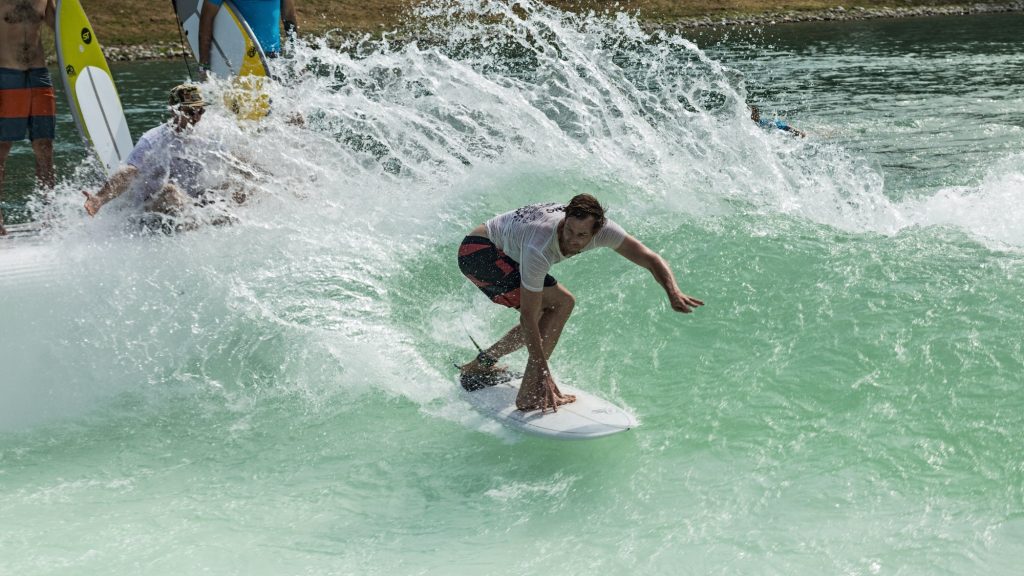
About the Author Quirin Rohleder: Born in 1974, I started surfing the Eisbach at the age of 13. First rapid surfer to be sponsored. During school, worked for a local shaper, Colin Paterson, doing surfboard repair; worked at the local surf shop Boarders in Munich, marketing for Reef Brazil after school. 5 min of fame at the Swatch Wave Tour event in Munich 1999, beating Kelly Slater 😉 Moved to France at the age of 25 to work for Billabong. Started in the stock room, moved to marketing after six months. Helped set up the very first live webcast of an ASP event in Mundaka (2002). Live stream commentator (French) of all Billabong World Tour events. Now back in Munich running WaterWorks! with my business partner Christian Bach. Founders of the Rapid Surf League, running kids surf events in Munich, running a surfboard brand called Mighty Otter Surfboards, agency work, Patagonia brand ambassador.
Related Coverage
